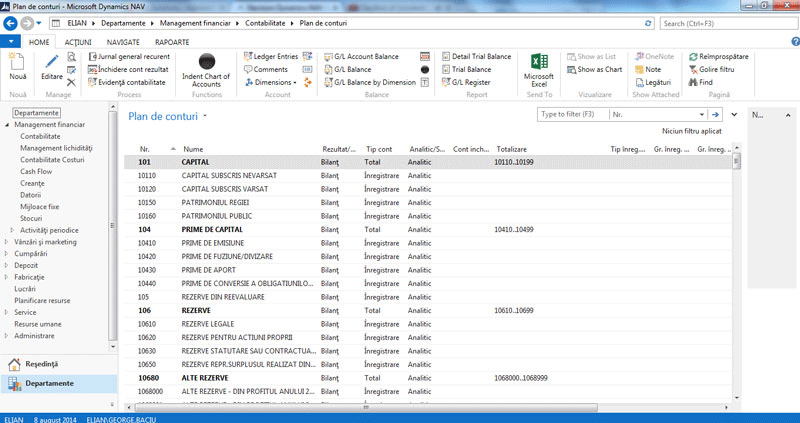The Financial Management module in Dynamics 365 (NAV) allows you to manage your company’s financial accounting. It is the “heart” of the system, as any transaction in another module will eventually have financial consequences. The module contains information about accounting records, fixed assets, bank accounts, customers and suppliers.
In today’s environment, where organizations face unprecedented challenges from the external environment, a successful business must be able to adapt quickly, analyze huge amounts of data in real time and be able to respond to customer needs in record time.
The Financial Management module in the Dynamics 365 ERP solution addresses these challenges and business needs. The company can improve its existing workflows, localize and pursue new business opportunities. Working closely with all modules of the system where document entry generates accounting notes (inventory, treasury, fixed assets, payroll, projects, production, WMS, agriculture), the module links data as a consequence of the operation of the entire system and manual accounting notes. This provides traceability of operations and increased transparency of cash flows.

Among the features of the module we list:
* Parameterization of accounting accounts in the chart of accounts. For each account there is information about the actual and budgeted balance;
* View balances for a certain period;
* Accounting entries in any currency;
* Define the fiscal year with the start date as any date desired by the user and divide it into fiscal periods;
* Define budgets in matrix windows for a day, a week, a month, a quarter, a year or any fiscal period;
* Define budgets by cost centre or business unit;
* Bank account management – allows the management of the organization’s bank accounts and various operations with bank accounts;
* Traceability – for each transaction a trace is created, so that even complex business flows become transparent. There is a change log containing changes made by users to the data. A chronological list of changes to a field in a table shows what changes have been made and by whom;
* Inter-company records – records are created between companies within a group controlled by the same legal entity.
- Value added tax and other taxes used – registration groups are used so that all these taxes are calculated automatically. For VAT, the correctness of the tax registration number is checked by country and the uniqueness of this number for customers and suppliers;
- Fixed assets – information on fixed assets and groups of fixed assets is defined. You can define an unlimited number of depreciation registers for each fixed asset and one of the methods of straight-line, declining balance or accelerated depreciation.
Cost: Reduce operational costs by automating accounting operations. Following the implementation of the Financial Management module in the ERP Dynamics 365 system, a very large number of the total accounting entries are made automatically according to the rules and configurations specific to the client company. As a result, it significantly reduces the time for data processing.
Time: Significantly reduces the time required for mandatory reporting to the state as well as the reporting times on all processes.
Risks: Reduces business risks through transparency of actual and budgeted balance information, control over budgets, traceability.


